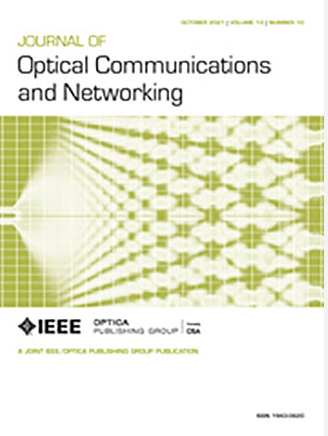Task scheduling strategy for mitigating cold start impact in serverless edge computing optical networks
IF 4.3
2区 计算机科学
Q1 COMPUTER SCIENCE, HARDWARE & ARCHITECTURE
引用次数: 0
Abstract
As emerging technologies advance, the demand for real-time processing of large-scale data grows increasingly critical. This paper focuses on a scenario of serverless edge computing (SEC) supported by optical networks, which integrates SEC’s key features (e.g., auto-scaling and edge deployment of computing resources) with the transmission advantages of optical networks to enable efficient data processing. However, this scenario brings new challenges beyond the scope of traditional task scheduling strategies. On the one hand, task scheduling needs to consider the resource limitations of computing nodes and dependencies between serverless functions; on the other hand, cold start issues caused by the “scale-to-zero” characteristic of SEC significantly impact latency-sensitive tasks. Moreover, existing container warming strategies for mitigating cold start suffer from resource waste and are disconnected from network scheduling. Therefore, this paper proposes a container warming and task scheduling strategy based on reinforcement learning (CWS-RL), which aims to mitigate the impact of cold start, reduce task latency, and control container warming costs. It makes dynamic container warming decisions based on long short-term memory (LSTM) network prediction results and incorporates the dependency slack characteristics of serverless tasks. Meanwhile, it adopts the Deep Deterministic Policy Gradient (DDPG) algorithm to achieve collaborative optimization of container warming and communication scheduling. Compared to the four baseline algorithms, CWS-RL achieves an average latency reduction of 24.08% and an average container warming costs reduction of 17.48%.缓解无服务器边缘计算光网络冷启动影响的任务调度策略
随着新兴技术的进步,对大规模数据实时处理的需求变得越来越重要。本文重点研究光网络支持的无服务器边缘计算(SEC)场景,该场景将SEC的关键特性(计算资源的自动扩展和边缘部署)与光网络的传输优势相结合,实现高效的数据处理。然而,这种情况带来了传统任务调度策略范围之外的新挑战。一方面,任务调度需要考虑计算节点的资源限制和无服务器功能之间的依赖关系;另一方面,由SEC的“scale-to-zero”特性引起的冷启动问题会严重影响对延迟敏感的任务。此外,现有的集装箱冷启动缓解策略存在资源浪费和与网络调度脱节的问题。为此,本文提出了一种基于强化学习(CWS-RL)的容器预热和任务调度策略,以减轻冷启动的影响,降低任务延迟,控制容器预热成本。它基于长短期记忆(LSTM)网络预测结果,结合无服务器任务的依赖松弛特性,做出动态容器升温决策。同时,采用深度确定性策略梯度(Deep Deterministic Policy Gradient, DDPG)算法,实现了集装箱升温和通信调度的协同优化。与4种基线算法相比,CWS-RL平均时延降低24.08%,平均集装箱升温成本降低17.48%。
本文章由计算机程序翻译,如有差异,请以英文原文为准。
求助全文
约1分钟内获得全文
求助全文
来源期刊
CiteScore
9.40
自引率
16.00%
发文量
104
审稿时长
4 months
期刊介绍:
The scope of the Journal includes advances in the state-of-the-art of optical networking science, technology, and engineering. Both theoretical contributions (including new techniques, concepts, analyses, and economic studies) and practical contributions (including optical networking experiments, prototypes, and new applications) are encouraged. Subareas of interest include the architecture and design of optical networks, optical network survivability and security, software-defined optical networking, elastic optical networks, data and control plane advances, network management related innovation, and optical access networks. Enabling technologies and their applications are suitable topics only if the results are shown to directly impact optical networking beyond simple point-to-point networks.

 求助内容:
求助内容: 应助结果提醒方式:
应助结果提醒方式:


